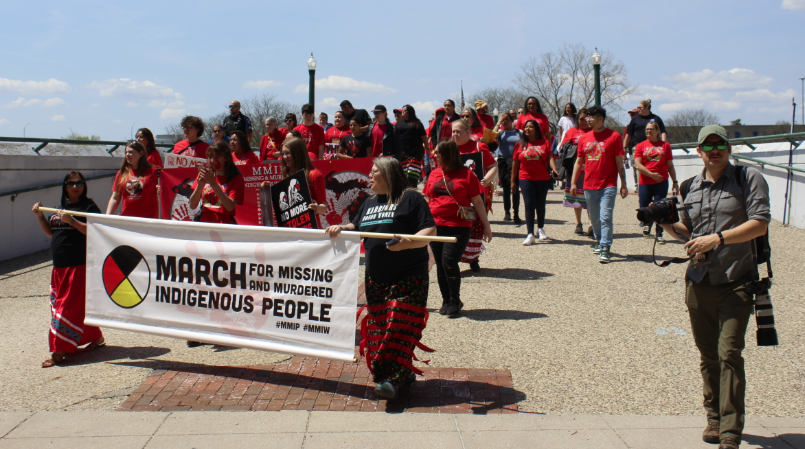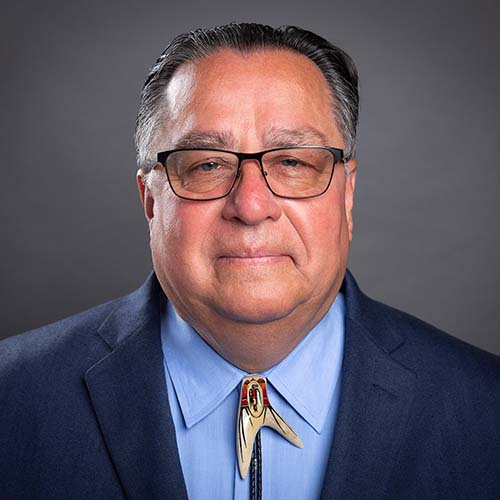
- Details
- By Levi Rickert
Opinion. Tomorrow on May 5, thousands of Native Americans will hold rallies and march to recognize the epidemic of Missing and Murdered Indigenous People (MMIP).
I have often been asked why the date was chosen because Mexican Americans celebrate Cinco de Mayo, which commemorates Mexico’s 1862 victory over the French at the Battle of Puebla. Among Native Americans, May 5 was not randomly chosen to bring awareness to MMIP. The date was selected because the Montana congressional delegation persuaded the U.S. Senate to pass a resolution declaring the national day of awareness because May 5 was the birthday of Hanna Harris, a member of the Northern Cheyenne tribe who went missing on July 4, 2013.
Had she lived, Hanna would have turned 33 tomorrow.
Tomorrow, I will cover the March for Missing and Murdered Indigenous People in my hometown, Grand Rapids, Mich. This year, as I follow along the march, I will think about President Donald Trump’s proposed 2026 budget, which calls for a deep cut in law enforcement funding on Indian reservations.
Trump’s budget proposal, announced Friday, calls for a $107 million reduction — a 20% cut —to tribal law enforcement funding. The rationale: to “streamline the tribal law enforcement program to reduce redundancies and inefficiencies,” according to the budget document.
The proposed reduction is going in the wrong direction. If anything, there should be a significant increase to law enforcement in Indian Country.
Last year, National Congress of American Indians President Mark Macarro, chairman of the Pechanga Band of Luiseño Indians, testified before the U.S. Senate Committee on Indian Affairs that there is so much need relating to public safety and justice in Indian Country, he did not know where to start. He called the situation an acute crisis that has been going on for decades. He blames the crisis on inadequate funding.
Macarro cited the federal standard for officers is 2.4 per 1000 people. The Oglala Sioux Tribe on the Pine Ridge Indian Reservation in South Dakota has 0.6 officers per 1000 people.
“There's 56 million acres in Indian Country and given there are a handful of officers on patrol and every call for service — Missing and Murdered Indigenous Persons and other serious crimes, such as fentanyl and those committed by cartels — every call for service has an extended response time. It's unacceptable. Every non-Native in any community in the United States wouldn't accept what's happening in Indian Country and something needs to be done about that,” Macarro said.
The lack of adequate law enforcement on Indian reservations contributes to the tragedies of our stolen sisters, mothers, aunties, and daughters. So, we march on May 5th wearing red to raise our voices in the memory of those lost to the MMIP epidemic. We know the reality is that the MMIP epidemic is not limited to a single day or a single gender. This crisis is a daily horror lived by Native families—one that too often goes unanswered by those with the power to act.
For decades, Native communities have known what many outside are only beginning to learn: Indigenous people, especially women and girls, go missing and are murdered at rates far higher than any other demographic in the United States. Yet their cases are routinely ignored, misclassified, or simply not counted. Federal and local law enforcement agencies have long failed to adequately investigate these cases, and the justice system has too often shown indifference to Native pain.
To be clear—this crisis did not appear overnight. It is rooted in centuries of systemic violence, colonialism, and the ongoing erasure of Indigenous sovereignty. Jurisdictional confusion between tribal, state, and federal authorities continues to obstruct investigations.
Many tribes lack the resources and support to respond effectively. Data collection is inconsistent, and oftentimes missing entirely. It’s no surprise families feel abandoned. For those reasons, more funding is needed to properly staff and equip law enforcement in Indian Country.
We need action that is as relentless and unapologetic as the love Indigenous families have for their missing relatives. That means fully funding tribal law enforcement.
It means honoring tribal sovereignty by letting Native nations lead their own investigations. It means building a centralized, transparent MMIP database. And most of all, it means believing Native people when we say we are in crisis.
The MMIP movement isn’t a trend—it is a fight for our survival. To ignore it any longer is to be complicit in a system that has for too long turned a blind eye to Indigenous suffering.
We will not be silent. Not now. Not ever.
Thayék gde nwéndëmen - We are all related.
More Stories Like This
The Absence of October's Job Report Shows Why Native American Communities Need Better DataTribal IDs Are Federally Recognized. ICE Agents Are Ignoring Them.
Thanksgiving: Part of "Broken Circle Holiday"
Thanksgiving is a Tradition. It's Also a Lie
Decisions About Us, Without Us: Education Dismantling Ignores Tribal Nations
Help us tell the stories that could save Native languages and food traditions
At a critical moment for Indian Country, Native News Online is embarking on our most ambitious reporting project yet: "Cultivating Culture," a three-year investigation into two forces shaping Native community survival—food sovereignty and language revitalization.
The devastating impact of COVID-19 accelerated the loss of Native elders and with them, irreplaceable cultural knowledge. Yet across tribal communities, innovative leaders are fighting back, reclaiming traditional food systems and breathing new life into Native languages. These aren't just cultural preservation efforts—they're powerful pathways to community health, healing, and resilience.
Our dedicated reporting team will spend three years documenting these stories through on-the-ground reporting in 18 tribal communities, producing over 200 in-depth stories, 18 podcast episodes, and multimedia content that amplifies Indigenous voices. We'll show policymakers, funders, and allies how cultural restoration directly impacts physical and mental wellness while celebrating successful models of sovereignty and self-determination.
This isn't corporate media parachuting into Indian Country for a quick story. This is sustained, relationship-based journalism by Native reporters who understand these communities. It's "Warrior Journalism"—fearless reporting that serves the 5.5 million readers who depend on us for news that mainstream media often ignores.
We need your help right now. While we've secured partial funding, we're still $450,000 short of our three-year budget. Our immediate goal is $25,000 this month to keep this critical work moving forward—funding reporter salaries, travel to remote communities, photography, and the deep reporting these stories deserve.
Every dollar directly supports Indigenous journalists telling Indigenous stories. Whether it's $5 or $50, your contribution ensures these vital narratives of resilience, innovation, and hope don't disappear into silence.
 The stakes couldn't be higher. Native languages are being lost at an alarming rate. Food insecurity plagues many tribal communities. But solutions are emerging, and these stories need to be told.
The stakes couldn't be higher. Native languages are being lost at an alarming rate. Food insecurity plagues many tribal communities. But solutions are emerging, and these stories need to be told.
Support independent Native journalism. Fund the stories that matter.
Levi Rickert (Potawatomi), Editor & Publisher

